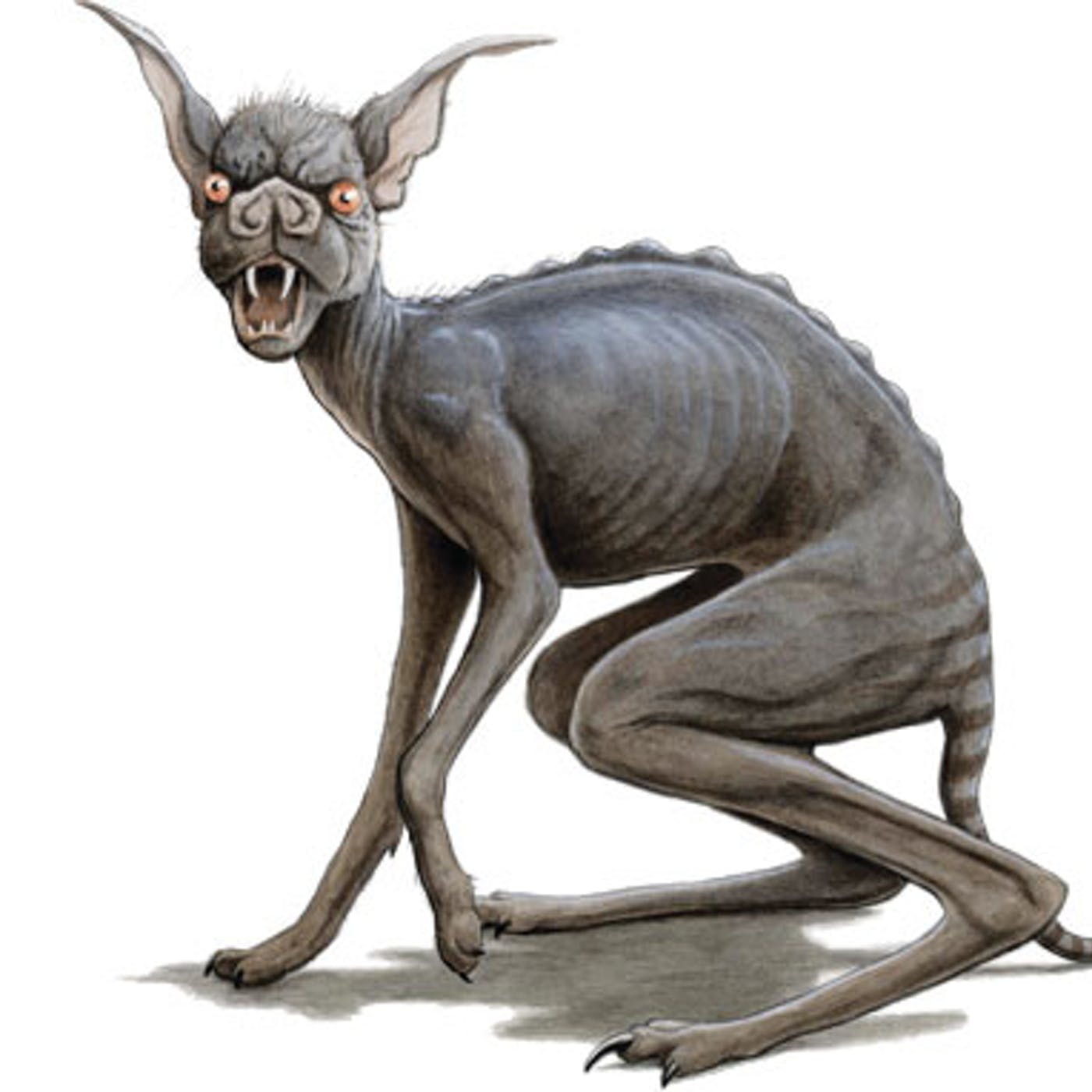8. Vodnik
Vodyanoy is said to appear as a naked older man with a frog-like face, greenish beard, and long hair, with his body covered in algae and muck, usually covered in black fish scales. He has webbed paws instead of hands, a fish’s tail, and eyes that burn like red-hot coals. He usually rides along his river on a half-sunk log, making loud splashes. Consequently, he is often dubbed “grandfather” or “forefather” by the local people. Local drownings are said to be the work of the vodyanoy (or rusalkas).
7. Bunyip
6. The Chupacabra
The Chupacabra or chupacabras is a legendary creature in the folklore of parts of the Americas, with its first purported sightings reported in Puerto Rico. The name comes from the animal’s reported habit of attacking and drinking the blood of livestock, including goats. Physical descriptions of the creature vary.
5. Mongolian death worm
According to British biologist Karl Shuker in his book “The Unexplained: An Illustrated Guide to the World’s Paranormal Mysteries” (2002, Metro Books), “One of the world’s most sensational creatures may be concealed amid the sands of the southern Gobi desert. ... It is said to resemble a large fat worm, up to 1 meter (3 feet) long and dark red, with spike-like projections at both ends. It spends much of its time hidden beneath the desert sands, but whenever one is spotted lying on the surface, it is carefully avoided by the locals.”
4. Jorogumo
According to legend, when a Jorogumo spider (a species of Golden Orb Weaver) turns 400 years old, it gains magical powers. Stories of Jorōgumo can be found in Edo period works. In many of these stories, Jorōgumo changes its appearance into a beautiful woman to ask a samurai to marry her or takes the form of a young woman carrying a baby (which may turn out to be a spider’s egg sack).
Jorō-gumo’s favorite prey is young, handsome men who are looking for love. When a jorō-gumo spots a man she desires, she invites him into her home, and he is usually never seen again. A jorō-gumo can operate like this for years and years, even in the middle of a busy city, while the desiccated skeletons of hundreds of youth build up in her home.
3. Minotaur
Minotaur, Greek Minotauros (“Minos’s Bull”), in Greek mythology, is a fabulous monster of Crete that had the body of a man and the head of a bull. It was the offspring of Pasiphae, the wife of Minos, and a snow-white bull sent to Minos by the god Poseidon for sacrifice. Minos, instead of sacrificing it, kept it alive; Poseidon, as a punishment, made Pasiphae fall in love with it. Her child by the bull was shut up in the Labyrinth created for Minos by Daedalus.
The word Minotaur is a compound word consisting of the ancient Greek name “Μίνως” or “Minos” and the noun “ταύρος” or “bull.” Thus, the word Minotaur comes to mean “bull of Minos.” While, the Minotaur’s birth name, Asterion, in ancient Greek “ἀστέριον” means “starry one” which suggests an association with the bull constellation: Taurus.
2. Blemmyae
“For the eastern region of Libya [i.e., North Africa], which the nomads inhabit, is low-lying and sandy as far as the Triton river; but the land west of this, where the farmers live, is exceedingly mountainous and wooded and full of wild beasts. In that country are the huge snakes and the lions, and the elephants and bears and asps, the horned asses, the Dog-Headed (Kynokephaloi) and the Headless (Akephaloi) men that have their eyes in their chests, as the Libyans say, and the wild men and women, besides many other creatures not fabulous.”
1. Wendigo
In 1907, Algernon Blackwood wrote a short story called “The Wendigo.” Within its pages, he recounted a hunting party venturing into the Canadian backwoods and returning profoundly changed by an encounter with a wendigo [source: Algernon Blackwood].
The Fiddler killings lent credibility to the notion that wendigoes were real. But they also point to a myth evolving from eradicating the physical or mental illness; the murder and quarantined disposal of wendigo bodies may have stopped the spread of disease or silenced the mentally ill. Read to find out how one stops this horrible creature.














0 Comments